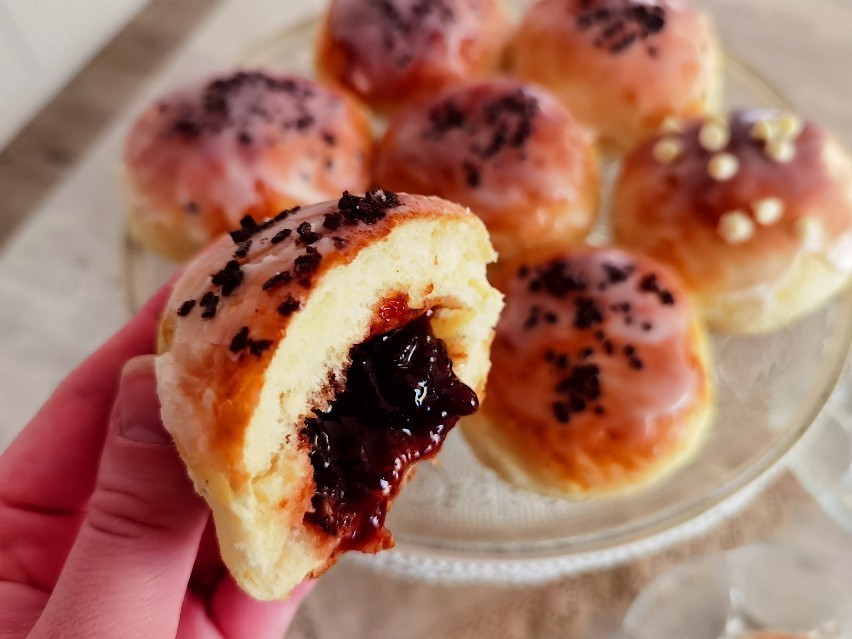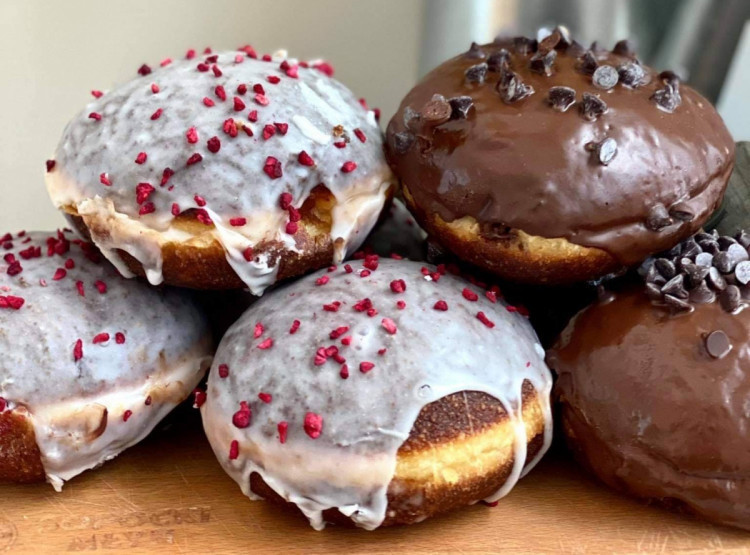For 🇬🇧🇺🇲 scroll down ⏬
Święto wszystkich łasuchów! Tradycyjnie wypada w ostatni czwartek przed Środą Popielcową. Tłusty czwartek to ten dzień w roku, kiedy z czystym sumieniem możemy zarzucić wszystkie diety i ograniczenia i sobie pofolgować.
W dawnej Polsce ostatni tydzień przed postem stanowił czas hucznych zabaw i objadania się tłustymi pieczeniami, kiełbasami, pasztetami czy boczkiem. W Tłusty Czwartek nadal objadamy się tłustościami, ale dziś są nimi słodkie i tłuste pączki, racuchy oraz faworki, zwane też chrustem albo chruścikami.
Spotkajmy się aby tradycji stało się za dość!
Dzień: 8 lutego czwartek (tłusty) Godz. 🕕 18:00
UWAGA! To jest jedyny dzień w roku, kiedy pączki nie tuczą!
Event potrwa do 🕡 18:30 (a może dłużej, przewiduje kolejki po pączki)
Miejsce: centrum - w okolicy wiele cukierni - dla każdego coś dobrego wg gustów 
W dzisiejszych czasach pączki dostepne są we wszytskich możliwych "odsłonach": tradycyjne, bezglutenowe, wegańskie i dietetyczne, z konfiturą różaną, malinową, owocową, karmelową, pistacjową, wiśniami i gorącą czekoladą, budyniem, adwokatem, autorskimi kremami, lodami, a nawet z mięsem..... jakie chcesz! a na wierzchu z lukrem, pudrem, kajmakiem, posypkami, polewami, skórką pomarańczową albo.... wymyśl sobie...
Kto pochwali się najciekawszym pączkiem jakiego zjadł (lub upiekł) dostanie w nagrodę...



W XVI stuleciu pączki były bułami z żytniego ciasta chlebowego, nadziewanymi słoniną i smażonymi na smalcu. Słodkie racuchy, pączki i chrusty pojawiły się w następnych wiekach. Jak pisał ks. Jędrzej Kitowicz w swoim dziele z XVIII wieku "Opis obyczajów za panowania Augusta III": "Skoro się nacisnęło do Polski kucharzów Francuzów i rodacy wydoskonalili się w kucharstwie, (...). Ciasta także francuskie, torty, biszkopty i inne, pączki nawet - wydoskonaliło się to do stopnia jak najwyższego. Staroświeckim pączkiem trafiwszy w oko, mógłby go był podsinić, dziś pączek jest tak pulchny, tak lekki, że ścisnąwszy go w ręku, znowu się rozciąga i pęcznieje jak gąbka do swojej objętości, a wiatr zdmuchnąłby go z półmiska". Jeszcze w pierwszych dziesięcioleciach ubiegłego stulecia pączki smażono, zgodnie recepturą sprzed wieków, a więc głównie z kęsów rozwałkowanego i zawijanego ciasta, na rozgrzanym smalcu. Postęp technologiczny w przemyśle spożywczym i względy ekonomiczne sprawiły, że dziś zarówno rzemieślnicze zakłady cukiernicze, jak i duże wytwórnie, wykorzystują do smażenia ciastek oleje roślinne.
Zwyczaj i receptury smażenia pączków w Tłusty Czwartek rozpowszechnili warszawscy cukiernicy. W okresie PRL surowce cukiernicze, a więc mąkę, cukier, śmietanę i tłuszcze, reglamentowano lub były one w ogóle niedostępne na rynku. Cukiernicy starali się dawać sobie radę. Marmolady wieloowocową, różaną czy powidła, będące nadzieniem pączków, przygotowywali sobie sami, na wiele dni przed Tłustym Czwartkiem. Układali je na cieście i zawijali. Pączek usmażony razem z miał doskonały smak. Nie do pomyślenia było szprycowanie pączków nadzieniem po jego podpieczeniu. Dziś jest to regułą, bo chodzi tu o zmniejszenie pracochłonności, a tym samym - kosztów ich wytwarzania i cen oraz zwiększenie dostępności.

Let's meet and let's have a "Pączek" to keep the tradition alive!
Pączek /ˈpɔn.t͡ʂɛk/ - Polish donut
Day: February tth, Thursday (Fat Thursday)
At 6:00 p.m. 🕕
The event will last until 6:30 p.m. 🕡 (perhaps longer, as it anticipates bakery/confectionary queues)
Place: centrally located - many patisseries around - something for everyone's tastes.
ATTENTION! This is the only day of the year when donuts are not fattening!
In the sixteenth century, doughnuts were buns made of rye bread dough, stuffed with bacon and fried in lard. Sweet pancakes, doughnuts and brushwood appeared in the following centuries. As Fr. Jędrzej Kitowicz in his work from the 18th century "Description of customs during the reign of August III": "Since French chefs came to Poland and their countrymen perfected themselves in cooking, (...) French cakes, pies, biscuits and others, doughnuts even - it got perfected to the highest degree. An old-fashioned doughnut could hit his eye, today the doughnut is so plump, so light that, squeezing it in my hand, it stretches again and swells like a sponge to its volume, and the wind would blow it away from the platter ". Even in the first decades of the last century, doughnuts were fried in accordance with the recipe of centuries ago, mainly from parts of rolled-out and wrapped dough, on hot lard. Technological progress in the food industry and economic considerations have meant that today both craft confectionery factories and large factories use vegetable oils for frying cakes.
The custom and recipes for frying doughnuts on Fat Thursday were spread by Warsaw confectioners. During the communist times, confectionery raw materials, i.e. flour, sugar, cream and fats, were regulated or were not available on the market at all. Confectioners tried to cope. Multi-fruit marmalades, rose marmalades or plum jam, which are the filling of doughnuts, were prepared by the confectioners many days before Fat Thursday. They put them in the dough and wrapped them. The doughnut fried with the filling had an excellent taste. It was unthinkable to sprinkle doughnuts with filling after baking. Today it is the rule, because it is about reducing labour consumption, and thus - the costs of their production, removal and prices, and increasing availability.
Polish Donuts - Spherical yeast cakes, slightly flattened. The dough for this confectionery delicacy is made from wheat flour and milk, with the addition of yeast, fat and eggs. Traditional cake fillings are rose jam, plum jam, jam or fruit marmalade. During frying, in deep fat (lard or oil) at 165 degrees C, the doughnut formed from the dough takes on a brown colour. Around its perimeter should remain a bright strand, the so-called collar. This is the effect of rotating the formed cookie in hot fat. "Collar" indicates that the bud is well-grown, plump and has the right volume.
Depending on the manufacturer, they weigh between 50 and 100 g. A 50 g Pączek contains over 15 g fat, 7 g protein and 65 g carbohydrates. Its energy value is almost 300 kcal. For the human body to burn these calories, one needs 20 min. run, 40 min of walking or 60 min. on dance or….
How many did you have today? How many can you have at once? Indulge yourself!
During the meeting we will organize some games and competitions – there will be fun! Pączki will be there, but will there be enough for everyone? All doughnuts are welcome – as to your liking...